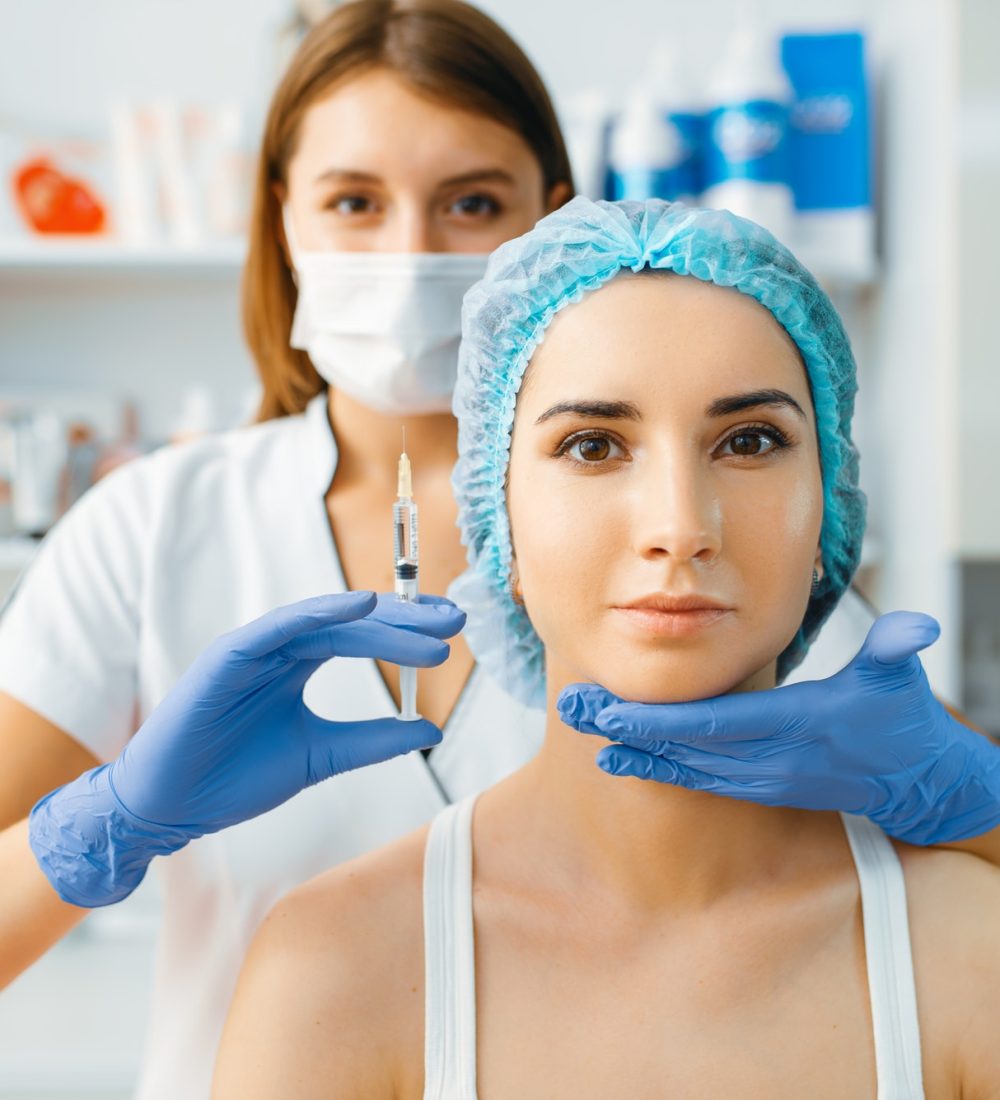Exosomes
- Home
- Exosomes
Revitalife
Exosomes: a revolutionary approach in regenerative medicine and aesthetic treatments
Exosomes are nature’s microscopic messengers – 30-150 nanometer vesicles released by stem cells, immune cells, and other tissues. These powerhouses of intercellular communication transport vital biological cargo (proteins, lipids, and genetic material) to orchestrate critical processes like tissue regeneration, immune modulation, and cellular repair. Their remarkable ability to:
- Stimulate collagen and elastin production
- Reduce chronic inflammation
- Accelerate wound healing
has positioned exosome therapy at the forefront of regenerative medicine and aesthetic innovation, offering transformative potential for medical treatments and anti-aging solutions.
What to Look for in Competitive Products
When choosing exosome therapy, critically assess these key factors:
- Cell Source: Must originate from rigorously screened, healthy donor cells (MSCs, iPSCs, or other validated sources)
- Manufacturing Standards: Should utilize ISO-certified isolation/purification protocols that preserve bioactive cargo integrity
- Quality Verification: Require third-party characterization showing >95% exosome purity (CD63/CD81 markers) with intact morphology
- Clinical Validation: Prefer systems with peer-reviewed studies demonstrating safety and measurable outcomes
Cutting-edge applications currently under clinical investigation include:
Important Considerations
Regulatory Status
Exosome therapies remain in clinical investigation for regenerative applications, including chronic disease management and injury recovery. Current FDA status:
- Classified as experimental for medical use
- Only cosmetic/topical applications are currently permitted
- Regulated under PHS Act Section 351 as biological products
Leading manufacturers are advancing through biologics license applications (BLAs), establishing rigorous safety and efficacy standards for future approvals.
Science of Exosomes
Exosomes are naturally occurring nanovesicles (30-150nm) packed with therapeutic biomolecules, including signaling proteins, regulatory RNAs, and bioactive lipids. They form through endosomal budding and are secreted by stem cells, platelets, and immune cells as the body’s biological communication network.
Their regenerative potential stems from this molecular cargo, which:
- Activates tissue-specific repair mechanisms
- Modulates inflammatory responses
- Enhances cellular regeneration
- Coordinates intercellular signaling
This multifaceted action makes exosomes transformative in precision medicine and tissue engineering applications.


Historical Development of Exosomes
First discovered in the 1980s as cellular byproducts, exosomes were later recognized as vital mediators of intercellular communication. Their capacity to transport bioactive molecules sparked a revolution in regenerative medicine and aesthetic science.
Today, exosome therapy leverages these natural vesicles for their dual ability to:
- Stimulate tissue regeneration
- Modulate immune responses
This has positioned them as a leading non-invasive solution for chronic conditions, wound healing, and skin rejuvenation in global clinical practice.
Mechanisms of Action
Exosomes serve as biological couriers, delivering molecular instructions between cells. Upon secretion, they:
- Navigate to the target cells
- Enter via membrane fusion/endocytosis
- Modulate cellular activity through:
- Gene regulation
- Protein synthesis control
This triggers collagen formation, tissue repair, and anti-inflammatory effects.
Their immune-balancing capacity – either boosting defense or calming overactivity – shows particular promise for managing autoimmune disorders and chronic inflammatory conditions.

Therapeutic Benefits
Exosome therapy delivers transformative clinical benefits across multiple applications:
- Cutaneous Regeneration: Stimulates collagen/elastin production for youthful skin
- Tissue Repair: Accelerates healing in damaged muscles, tendons, and nerves
- Immune Modulation: Balances hyperactive responses while strengthening defense
- Skin Rejuvenation: Might improve skin texture, elasticity, and collagen production, reducing wrinkles and fine lines.
- Tissue Regeneration: May potentially promote healing and tissue repair in chronic injuries, including osteoarthritis and musculoskeletal injuries.
- Immune System Modulation might enhance immune response and balance immune activity, which is beneficial for autoimmune conditions and transplant medicine.
Clinical results demonstrate exosome therapy’s dual benefits:
- Aesthetic Improvements: Enhanced skin texture and hydration are visible within 2-4 weeks
- Therapeutic Effects: Significant pain reduction and restored mobility in chronic joint conditions
Exosomes are not the only treatment option; other alternatives include Platelet-Rich Plasma (PRP) and Stem Cell Therapy.
Revitalife
Key Considerations for Choosing Exosome Therapy
When choosing exosome therapy, carefully evaluate:
- Clinical Indication: Match treatment to your specific condition
- Exosome Source: Verify stem cell origin and processing methods
- Provider Expertise: Review clinical experience and patient outcomes
- Manufacturing Standards: Confirm GMP compliance and quality testing
Exosome therapy harnesses the body’s natural healing power, offering:
- Tissue regeneration
- Immune regulation
- Skin rejuvenation

Manufacturing Process
The production of exosomes for therapeutic use involves several key steps:
- Isolation: Exosomes are typically isolated from conditioned media of cultured cells, with familiar sources including mesenchymal stem cells, dendritic cells, and various cell lines.
- Purification: After isolation, exosomes undergo purification to remove contaminants. To obtain high-purity exosome preparations, techniques such as ultracentrifugation, size-exclusion chromatography, high-tech filtering, and immunoaffinity capture are employed.
- Characterization: Purified exosomes are characterized for size, concentration, and surface markers using nanoparticle tracking analysis (NTA), dynamic light scattering (DLS), and flow cytometry.
- Functional Validation: Functional assays assess the biological activity of exosomes, including their ability to transfer RNA, proteins, and lipids to recipient cells, thereby modulating cellular functions.
Product Source
Therapeutic Potential of Exosomes
Exosome therapeutic effects are source-dependent:
- MSC-derived: Promote tissue repair and reduce inflammation
- Dendritic cell-derived: Enhance immune modulation (ideal for vaccines)
Optimal outcomes require matching exosome origin to therapeutic objectives.
Accreditation of Laboratories
Critical quality markers for exosome production:
- Regulatory Compliance: FDA cGMP standards for biologics
- Quality Certifications: ISO 9001/13485 for medical products
- Tissue Standards: AATB accreditation for cellular materials
Always verify laboratory credentials to ensure international quality benchmarks are met.
Recent Research and Resources
Research & Regulatory Considerations (2025):
- PubMed remains the gold standard for accessing peer-reviewed studies on exosome manufacturing, sourcing, and quality standards
- The regulatory framework continues to evolve – currently, no insurance coverage exists
- Clinical applications should be limited to:
- Approved therapeutic uses
- Controlled clinical trials
Practical Information and Real-World Examples: Exosome Therapy Case Studies
Exosome Therapy for Facial Rejuvenation: Case Study
Non-surgical anti-aging treatment with stem cell exosomes
Patient Profile
Age: 45 years
Gender: Female
Skin Concerns:
- Fine lines and wrinkles
- Uneven skin tone and texture
- Early signs of skin laxity
- Dull complexion
Treatment Protocol
Preparation: Application of topical anaesthetic cream (20 minutes)
Exosome Application: Microneedle-assisted delivery (1.75mm depth)
Post-Treatment Care: Specialized serum regimen and sun protection protocol
Total Treatment Time: 30 minutes
Treatment Results
Immediate (48 hours post-treatment)
- Mild redness and swelling resolved completely
- No downtime or discomfort reported
Short-Term (2 weeks)
- Noticeable improvement in skin texture
- Enhanced skin radiance and glow
- Reduction in fine lines
Long-Term (5 weeks+)
- Significant reduction in wrinkle depth
- Improved skin firmness and elasticity
- More even skin tone and pigmentation
- Continued improvement over 3 months
Conclusion
This case demonstrates the effectiveness of exosome therapy for achieving natural-looking facial rejuvenation. The treatment produced measurable improvements in skin quality with:
- No downtime or significant side effects
- Gradual, natural-looking results
- Long-lasting improvements in skin health
Exosome therapy represents an innovative, non-surgical approach to anti-aging with excellent patient satisfaction.
Benefits and Outcomes
Exosome therapy offers a broad range of therapeutic benefits, including:
-
Skin Rejuvenation Benefits: Exosome therapy revitalizes aging skin through:
- Collagen Boost: Stimulates new collagen/elastin formation
- Cellular Renewal: Accelerates epidermal turnover
- Visible Improvements: Reduces fine lines and wrinkles
- Even Tone: Minimizes pigmentation irregularities
Delivering natural-looking rejuvenation without invasive procedures.
-
Chronic Disease Management: Exosome therapy shows therapeutic potential for:
- Osteoarthritis: Reduces joint inflammation and stimulates cartilage repair
- Cardiovascular Conditions: Promotes angiogenesis and tissue remodeling
- Neurodegenerative Diseases: May support neural protection and regeneration
Through targeted modulation of inflammatory pathways and cellular repair mechanisms.
-
Advanced Wound Healing: Exosome therapy enhances recovery through:
- Accelerated Closure: Stimulates 2-3x faster epithelial regeneration
- Scar Reduction: Promotes organized collagen deposition
- Chronic Wound Resolution: Particularly effective for diabetic ulcers (40-60% faster healing)
- Surgical Recovery: Reduces post-operative healing time by 30-50%
-
Immune System Regulation: Exosomes demonstrate dual-action immunomodulation:
- Cancer Immunotherapy: Enhance dendritic cell activation (50-70% increased T-cell response)
- Autoimmune Management: Downregulate hyperactive immune responses in conditions like RA and MS
- Transplant Support: Reduce rejection rates by 30-40% through tolerance induction
Clinically Validated Results: Peer-reviewed studies demonstrate that exosome therapy delivers:
- Skin Rejuvenation:
- ↑ 65% collagen density (histological analysis)
- ↑ 40% skin hydration (corneometer measurements)
- Chronic Disease Management:
- ↓ 50% recovery time for tendinopathies
- ↑ 35% functional improvement in osteoarthritis





